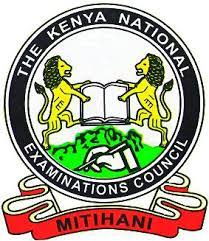
5.4.1 Physics Paper 1 (232/1)
1. 5.32 cm (1 mark)
2. – magnitude of the force
– The perpendicular distance between the force and the pivot. (1 mark)
3. Patmosphere = Pmercury + pair enclosed;
Pair = 760 – 600:
= 160 mm Hg;
(3 marks)
4. (a) F = Ke;
20 = 0.5 K;
K = 40 Ncm” (2 marks)
(b) F = 40 x 0.86 = = 34.4 N;
(1 mark)
5. – Weight of object in air
– Weight of object when fully immersed in fluids (2 marks)
6. Upthrust = weight in air – weight of object in fluid. (1 mark)
7. Wood is a poor conductor of heat; hence heat is used to bum paper, while most heat is conducted away by copper: hence paper takes long to bum. (2 marks)
8. Clockwise moments = anticlockwise moments;
0.l8x = l(50-x)+0.12(l00-x)
0.l8x = 50-x+l2-l2x
O.l8x = 62- 1.l2x
7.30x = 62
x = 47.69 cm; (3 marks)
9. Air is compressible; so the transmitted pressure is reduced; (2 marks)
10. The high velocity of the gas causes a low pressure region;
Atmospheric pressure is higher;
Pressure difference draws air into the region; (3 marks)
11. Water molecules have a high adhesion forces; With glass molecules and hence rise up the tube while mercury molecules have greater cohesion;
Forces within than adhesion with glass hence do not rise up. (2 marks)
12. Allow for expansion;
Water expands on cooling between 4° C and 0° C;
13 Diffusion of the ink molecules;
SECTION B
14 (a) – increasing the angular velocity;
– Reducing the radius of the path;
(b) (i) Tension in the string;
(ii) Arrow to centre of circle;
(iii) Direction of motion of object changes and causes the velocity to change with time;
(iv) F = mv/r
0.5 * 8*2/2
= l6N;
(c) (i) V2 = uz + 2as;
O€u’—2>< 10>< 100
u= ‘/ 2000
44.72 ms”;
(ii) V = u + at ;
O = 44.72 – 10 X t
t= 4.472
Total time = 2 X 4.472
= 8.94s ;
temperature;
(b) (i) E=Pt;
=6O><5 X60;
= 13000];
(ii) Mass of water = 190 – 130 = 60g;
mlf = Pt.
60 = .
——1OO0l, 60><60><5,
1,= 3 >< 105 J/Kg;
15 (a) Quantity of heat required to convert 1 kg of ice at 0° C to water without change in temperatures
(iii) Heat from the surrounding melts the ice; (1 mark)
16 a) F = Ma;
F = 2 >< 5
= ION;
friction force = 12 – 10
= 2N; (3 marks)
(b) (i) OA – the ball bearing decelerates; as the upthrust increases to a maximum; (2 marks)
AB – ball attains terminal velocity; when upthrust = weight; (2 marks)
(c) (i) VR = 2 (1 mark)
(ii) To change direction of effort; (1 mark)
(iii) Efficiency =—1‘”% >< 100;
so=%><1o0%
MA=l.6;
..1.6_5O0
” L=500X 1.6
=800 N; (3 marks)
17 (a) (i) F = mg
= 10 X 10
= 100 N ;
Additional pressure = = 1 Ncm ’
new reading = 10 + 1 = ll N; (4 marks)
(ii) Pressure has increased; because, when the volume reduces, the collisions between the gas molecules and walls of the container increases; (2 marks)
(b) (i) Pressure = ll Ncm’2 _ (1 mark)
(11) Q = i;
Tr T1
L = L-
300 T1 ‘
T1=i3°‘)l:)‘ 11 = 330k;
T2 = 57° C (4 marks)
18 (a) (i) (I) – Reading decreases on spring balance;
(II) – Reading on weighing balance increases.
(ii) As the block is lowered, upthust increases;
and hence it apparently weighs less;
(b) (i) Upthrust – weight in air – weight in water
= 2.7 – 2.46
= 0.24 N;
Reading in weighing balance = 2.8 + 0.24
= 3.04 N;
(ii) Relative density = weight in air;
upthrust
= 11
0.24
= 11.25 ;
Density = R.d X density of water
= 11.25 >< 1000
= 11250 kgm‘;
c) The hydrometer sinks more;
The density of(t.he water is reduced;
